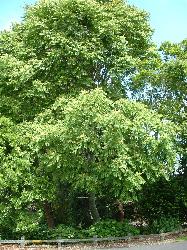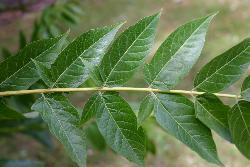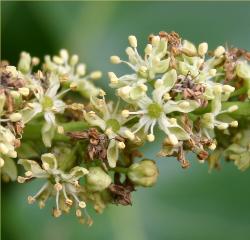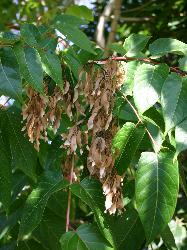- Taxon
- Weed
Habitat: bank, clay, coast, dry, flat , forest edge, gravel, gully, hill, lowland, margin, open, pasture, river terrace, roadside, sand, sheltered, shrubland, slope, stone, terrace, wasteland
Dispersal: Seed, suckers
Recognition
- a large shrub or tree that loses its leaves during autumn and that suckers extensively from underground roots.
- its once-compound leaves are very large (40-100 cm long), with 5-20 pairs of leaflets and a single leaflet at the tip.
- its leaflets are mostly entire, except for a few teeth or small lobes near the base which bear prominent raised glands.
- its small white or greenish-yellow flowers are borne in large spreading clusters at the ends of the branches.
- separate male and female flowers are produced on different plants.
- its distinctive winged fruit (3-5 cm long and 7-15 mm wide) turn bright reddish-pink or reddish-brown as they mature.
Images
References
Biosecurity New Zealand 2012: Regional Pest Management Strategies Database. http://www.biosecurityperformance.maf.govt.nz/
Biosecurity New Zealand 2008: National Plant Pest Accord. MAF Biosecurity New Zealand, Wellington.
Ministry for Primary Industries 23 Feb 2017: Unwanted Organisms Register. Version 02.01.02. https://www1.maf.govt.nz/uor








